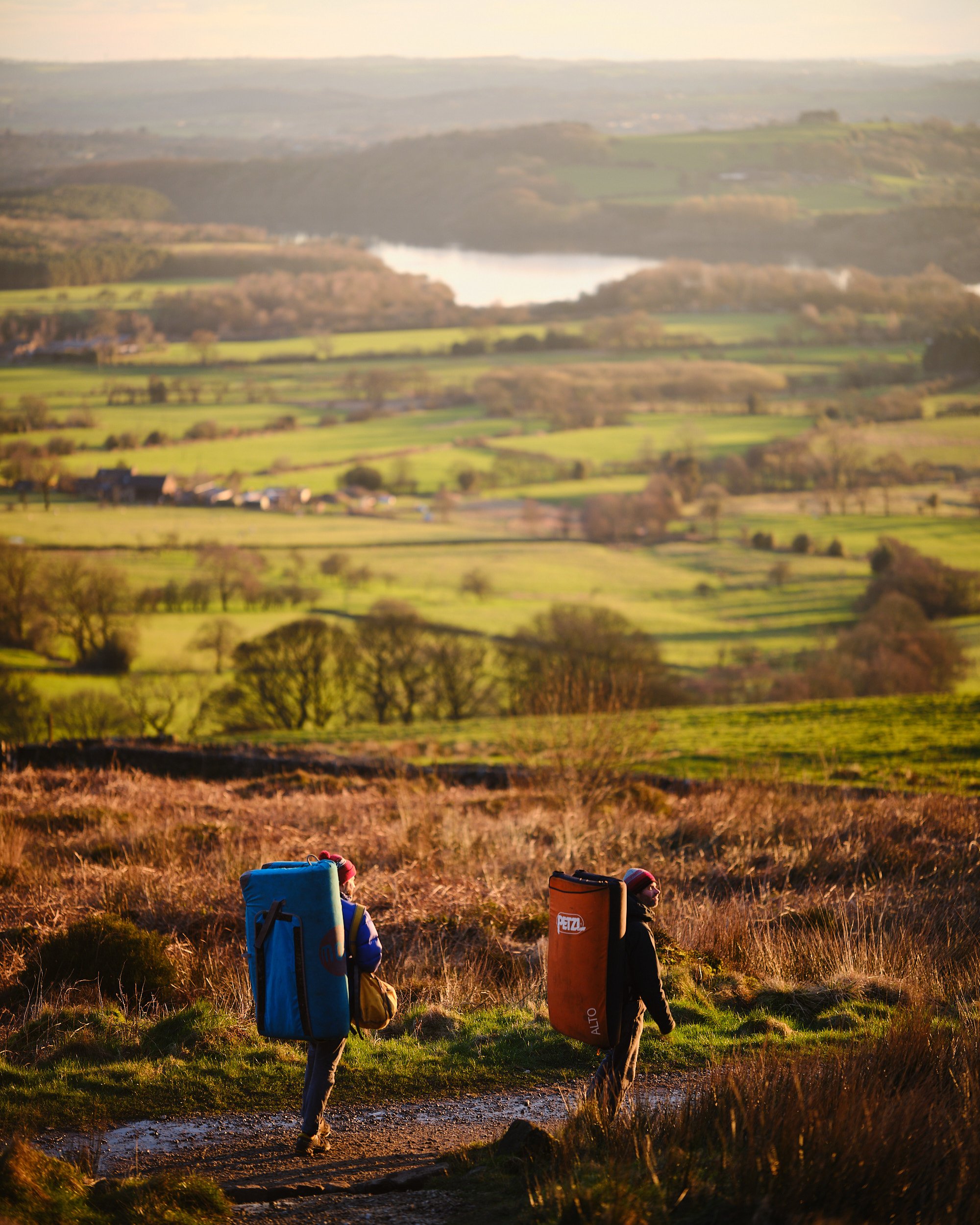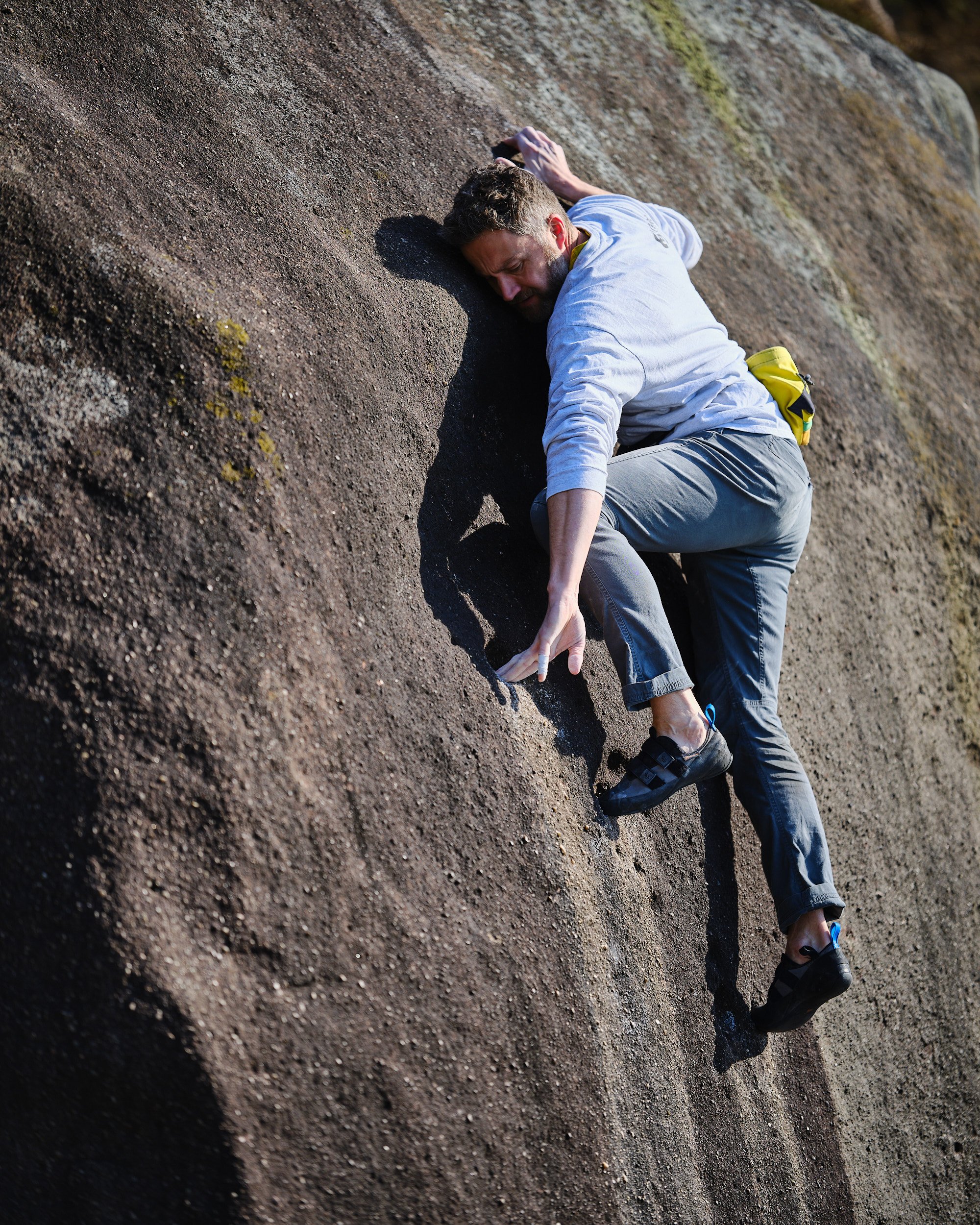Pennine Lines w/c 4 March 2024
|| A dry week || The turning point? ||
Trees || Lawrencefield aka Bole Hill Quarry
|| Focus On... ||
The Art Of Eliminates
March is here and FINALLY we had a decent weather day yesterday - I hope everyone who could get out made the most of it. Despite patches of lingering snow hiding out behind tussocks of grass it was actually too warm at times, strong sunshine and zero wind, but frankly after the dismally grim and wet weather of late I’ll take that and run. With the forecast promising a cool but dry week ahead maybe we’ve turned a corner now and this is the start of the run into spring proper - the best time of the climbing year by far in my opinion.
Of course as we’ve seen over the last couple of months it’s very much not aways those big wide-open crisp blue sky days in the North of England. And in fact a big part of climbing in the UK, with our increasingly crap climate, is just going out in all sorts of conditions and trying to find the best option on a given day. Find the dry crag, the shady crag, the crag not covered in melting snow, the least midgey crag, all to suit the time of year and whatever the weather throws at us. And similarly this has parallels with landscape photography in the UK. It’s not always primo conditions, and not everywhere can be a bucket-list destination with epic light - Bamburgh Castle at sunrise, Buachaille Etive Mòr in winter garb, a clearing storm in the Yosemite valley, or that mountain in Iceland you see in literally every aurora borealis photo. Our landscapes and countryside are often a bit less in-your-face, and combined with our weather you’ve sometimes got to just grind it out and work a bit harder and think a bit more about creating something worthwhile in a dingy damp quarry somewhere - with obvious parallels to climbing!
An eliminate, The Roaches || Climber: Adam Long
One of the things that has always drawn me to photography, specifically British landscape photography, is the alchemy of creating something out of apparently nothing. Or to put it another way, how it’s possible to craft a composition which allows you to find some sort of beauty out of a scene or location that you might otherwise walk right past without giving it another thought. Any idiot can take a passable photo of an epic location in amazing light, but the greater challenge is in creating order within the frame from the chaos of the world around us, to allow it to be understood and appreciated.
Photography has always jockeyed for position among more established art forms to gain acceptance and legitimacy. So a lot of the language used alludes to, and is borrowed from, other art forms. We always talk about composition, colour palette, craft, the sculpting of light etc etc. Even the word ‘photography’ means ‘drawing with light’. But in the rush to be compared favourably with other disciplines it’s easy to forget the key way in which photography is unique, and for me it’s because in photography you never begin with a blank canvas, an empty score, or a white sheet of paper. You always start with an infinite number of possibilities from the visual chaos going on all around us, and you’ve got to then get rid of almost all of it. So photography isn’t really about what you stick in the frame; it’s about what you exclude. It’s a reductive medium. It’s about getting rid of stuff, it’s about missing things out. In a sense, photography is an eliminate.
Missing things out || Lawrencefield
So this week while out on an inauspicious damp afternoon I was very much ‘doing eliminates’ in Lawrencefield quarry while out with the camera. Missing stuff out in order to let the stuff you keep in really sing - the same as climbing. Like when you climb a groove but miss out that big hold off to the side, or the old chipped hold at the bottom, to make the most of the feature. This notion sort of flips perceived wisdom about eliminates on its head - namely that ‘eliminate’ is a bad thing, it’s the ultimate diss in climbing. Have you tried that new problem of so-and-so’s? Nah, it’s an eliminate. Really an eliminate is as likely to be good as it is bad, in the same way that a photo can be successful or unsuccessful - miss too much out and it no longer makes sense.
I think we need to re-examine the eliminate’s position in modern climbing, specifically in bouldering. Moving beyond the sort of pragmatic making-the-most-of-the-rock type of eliminate, more generally they speak to the inner child in us, the sort of playful messing-around type of approach to climbing where the joy of movement is paramount, and can yield an enormously fun, creative and collaborative experience. In fact exactly the same as I enjoy trudging around with a big camera that everyone else looks askance at and trying to create something from seemingly nothing. Yet eliminates don’t sit well with the modern concepts of logbooks and ticking - considering boulder problems as bankable commodities then parachuting in to the destination problems and moving on. They aren’t necessarily served up on a plate, there’s some imagination required. Eliminates can have no value to anyone else but you, but that’s fine; not everything we do needs to be logged or commodified. When kids climb a tree or mess around jumping between rocks they don’t then go online later to log that tree (pun intended) and see what grade someone else gave it.
Maybe eliminates can be the ultimate rebellion against commercialism of climbing. Go out, make something up, climb it, enjoy it. And then don’t tell anyone about it, don’t record it, don’t grade it. It can’t be monetised, can’t be leveraged for likes, and nobody can tell you what fingerboard metrics you need to be pulling. It’s just for you, just climbing. We could be onto something here.
|| Recently Through the lens ||
After what seems like never-ending poor weather there's few things better for the soul than a good mid-grade circuit at the Roaches.
|| Fresh Prints ||
If you're off to the coast this Easter, as I will be, here's some 'missing stuff out' inspiration from Print Shop; details of the Northumberland coast.








